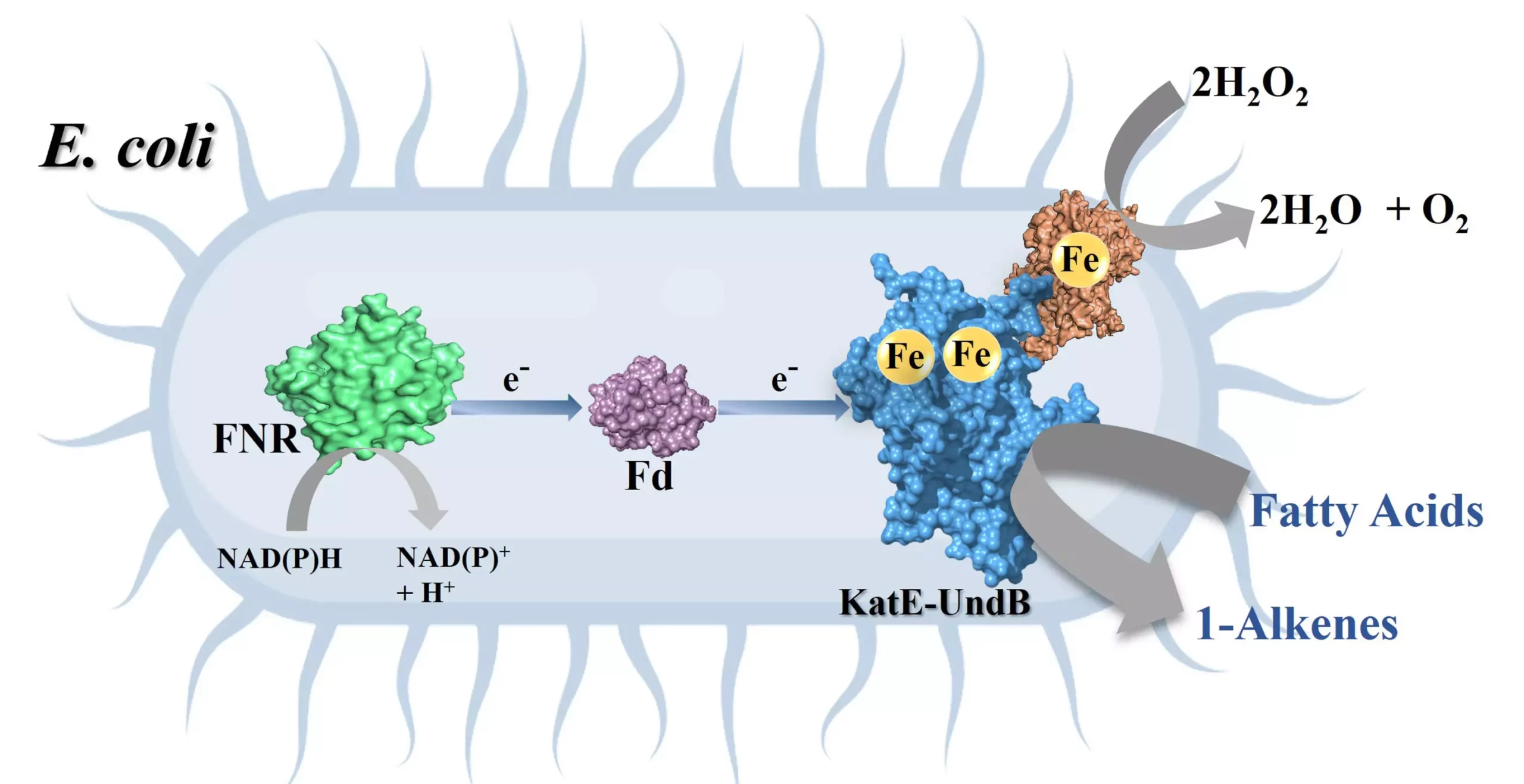In a world grappling with the dire impacts of climate change and the exhausting nature of fossil fuels, there is a pressing need for sustainable energy solutions. Traditional fossil fuels not only deplete natural resources but also contribute significantly to pollution and environmental degradation. In this critical context, scientists are activating their ingenuity to explore alternatives that are not just eco-friendly but also commercially viable. Among these innovations, researchers at the Indian Institute of Science (IISc) have made a groundbreaking leap by developing a novel enzymatic platform for converting fatty acids into 1-alkenes—biofuels with the potential to seamlessly integrate into existing fuel infrastructures.
From Fatty Acids to Valuable Hydrocarbons
The IISc team’s research outlines a promising pathway for converting naturally occurring and abundant fatty acids into hydrocarbons, specifically a class known as 1-alkenes. These compounds are not merely a fleeting scientific curiosity; they represent a sustainable alternative that can serve as “drop-in” biofuels. What sets 1-alkenes apart is their versatility—they can be blended with traditional fuels without necessitating significant modifications to current engines or infrastructures, making them highly appealing for widespread adoption.
A core aspect of this innovative platform is the utilization of microorganisms as “factories” for synthesizing these hydrocarbons. Given the continuous quest for enzymes that can efficiently catalyze this transformation, the IISc researchers identified an enzyme named UndB, which had shown promise in prior studies. Though initially valuable for its rapid conversion capability, UndB’s performance was hindered by the very byproducts generated during its catalytic cycles.
Overcoming Inhibition with Catalase
In addressing the inefficiencies observed during the enzymatic process, the research team unearthed a pivotal discovery: hydrogen peroxide (H2O2)—a byproduct of the reaction—was inhibiting the functioning of UndB. The introduction of catalase into the reaction mix marked a turning point. This enzyme effectively decomposed H2O2, minimizing its inhibitory effects and enhancing UndB’s activity dramatically—from only 14 to an impressive 265 turnovers.
This dramatic boost in efficiency opened the doors to further innovative strategies. By creating a fusion protein that combined UndB with catalase, researchers utilized genetic engineering techniques to implant this fused genetic code into E. coli bacteria. These modified cells were driven to act as whole-cell biocatalysts, effectively enhancing the production of 1-alkenes.
Tackling the Challenges of Membrane Proteins
While the progress was exciting, the scientists faced tangible challenges inherent in working with membrane proteins like UndB. Membrane proteins often present toxicity issues when expressed at high concentrations in bacterial systems, which can drastically hinder yield. Additionally, their low solubility in aqueous environments complicates the study of their functional dynamics.
To tackle these challenges, the research team rigorously experimented with various redox partner proteins, such as ferredoxin and ferredoxin reductase. These proteins play a crucial role in electron transport, providing UndB with the necessary electrons for efficient fatty acid conversion. The tinkering and optimization led to an astounding 95% conversion efficiency when fatty acids were utilized, underscoring the potential of this engineered biocatalyst.
Specificity and Broad Applicability of 1-Alkenes
A remarkable feature of this biocatalytic process is its specificity. The UndB enzyme exclusively produces pure 1-alkenes without generating unwanted byproducts—a highly desirable characteristic when considering large-scale industrial applications. The IISc team has validated the platform’s ability to process various fatty acids, further enhancing its versatility. Not only are these 1-alkenes potential biofuels, but they can also be transformed into valuable components for polychemical industries, including the production of styrene, a critical material for manufacturing plastics.
As the IISc researchers gear up for commercialization by applying for patents and seeking industry partnerships, their research stands as a beacon of hope in the Sustainable Energy landscape. The opportunity for scaling this innovative enzymatic platform could lead to a new chapter in biofuel production, marrying environmental responsibility with technological advancement. With the potential to generate vast quantities of valuable hydrocarbons, this development epitomizes the exciting convergence of biotechnology and energy sustainability, addressing two of humanity’s most pressing concerns: energy security and environmental preservation.


Leave a Reply